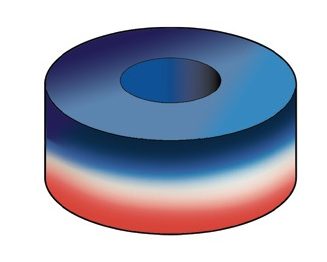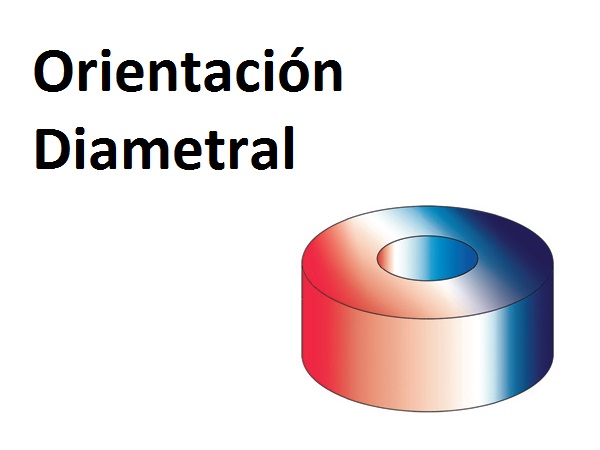For ‘direction of orientation’ it is understood the position of the magnetic cristals in a specific direction. In the correct direction, the magnet reaches its magnetic values and thus, should be magnetized in this direction.
The direction of orientation is achieved by exposing the magnetic particles to a strong external magnetic field during pressing. In the case of ring or round magnets, the direction of orientation is generally axial. In the case of square magnets, according to the thickness (h) and in the case of curved magnets, diametrical or radial.
Isotropic Magnets
Isotropic magnets do not have a direction of orientation. Due to this, the direction of magnetization can be chosen.
Anisotropic Magnets
Anisotropic magnets are pressed under a single magnetic field, thus fixing their direction of orientation. They only have good magnetic properties in that direction and can only be magnetized in that direction. They have a magnetic volume higher than isotropic magnets, with approximately double the remanence.
- Axially Orientated Magnets
Ring and round magnets are axially orientated. Square magnets are orientated through the thickness
- Diametrically Orientated Magnets
For special applications (motors, pumps, etc.), direction is applied diametrically (transversal to the axis)
- Polar Orientated Magnets
In polar orientated magnets, orientation is applied as it will the multipolar magnetization afterwards. These magnets are used mainly in combination with sensors, in motors or in generators. The remanence is 150-200% greater than in the same type of isotropic materials













Recent Comments